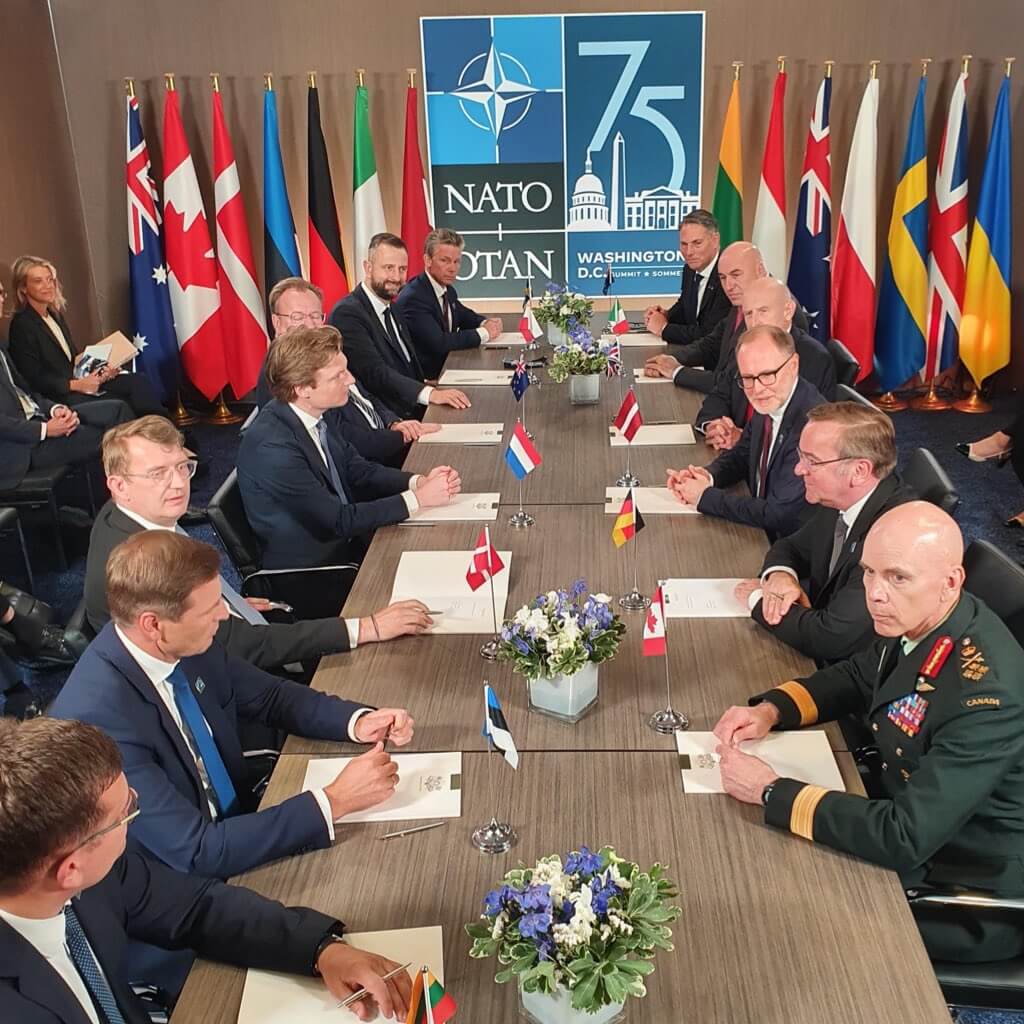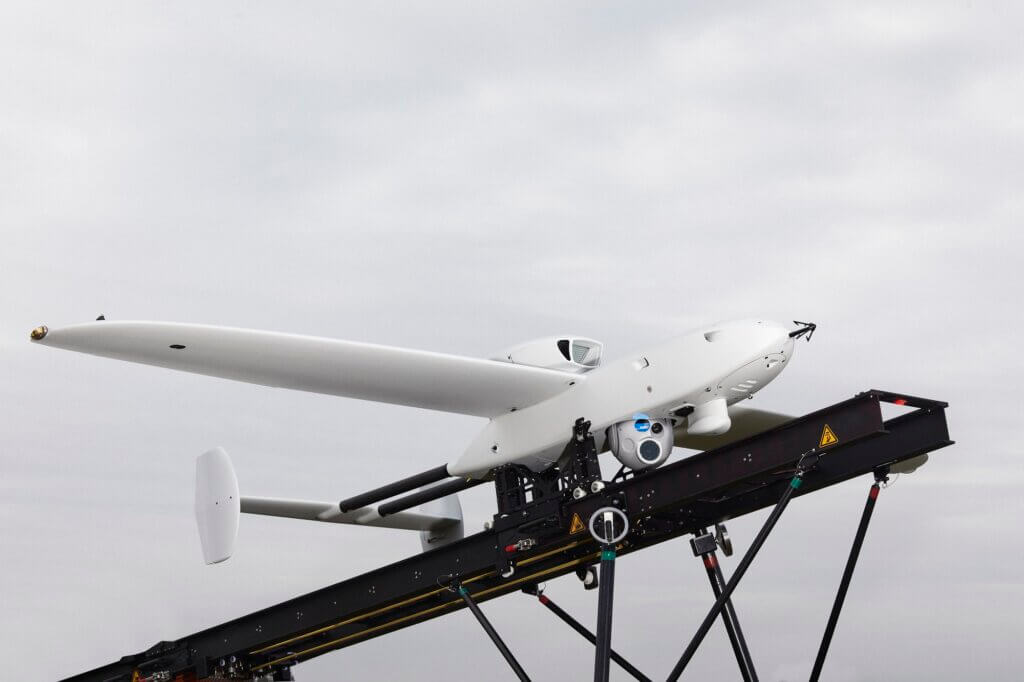If the Russian full-scale invasion of Ukraine, which has now been going on for two and a half years, has taught us anything, then it is that drones have become an integral part of the modern battlefield.
Whether it’s about high-resolution imagery from reconnaissance drones, which are irreplaceable for gathering information on troop movements or battle damage assessment, or neutralising enemy vehicles, equipment or infantry with the help of loitering munitions, drones are being used very effectively in Ukraine to an extent never seen before.
On the second day of the NATO Anniversary Summit in Washington, Germany’s Minister of Defence Boris Pistorius presented a new initiative as part of the Capability Coalition Drones, which aims to help Ukraine in its fight against the Russian military.
The idea is that the German industry along with the Latvian industry will provide the necessary production capacities, while NATO partners can jointly utilise them for Ukraine. Interestingly, British manufacturers have been left out of this initiative, although the UK is leading the Capability Coalition together with Latvia.
Prior to the summit, Pistorius announced in Alaska on the sidelines of the Arctic Defender exercise that he intended to present this initiative during the summit. According to his statement in Fairbanks, this should “create a basis” for the partners to jointly procure “all kinds of German-made drones”.

No further details have been provided by the German Ministry of Defence or Pistorius himself, even after around two days. This means that many questions remain officially unanswered, at least for now.
What is the great advantage of this initiative compared to the previous procurement process? After all, it was already possible for partner countries to purchase all kinds of German-made military equipment and weaponry for Ukraine before.
One possibility would be the conclusion of framework contracts with special conditions with German manufacturers, which could then be utilised by members of the drone coalition.
This is a common procedure that is used on a regular basis, for example, when it comes to procuring artillery ammunition. However, industry circles were clearly gloomy. The aim is apparently to satisfy Ukraine’s naturally high demand for drones with the help of other countries within the Capability Coalition Drones, as Germany itself would no longer have sufficient financial resources for this.
In other words, the German Ministry of Defence is reaching deep into its trick box and trying to put a positive spin on what is actually a bad situation and portray it as a success.
Other countries are supposed to pay for the German-made drones Ukraine says it needs in its fight against the Russian army, while the manufacturers in their own country would in the worst-case go away empty-handed.
It therefore remains to be seen to what extent drones produced in Germany or Latvia will actually be procured for Ukraine via the initiative. Especially due to the procurement costs of the German-made drones, which are likely to be of particular interest to the Ukrainian Ministry of Defence.
For example, Quantum Systems produces the Vector UAV, a high-quality eVTOL reconnaissance drone, which has been in use in Ukraine since April 2022 and is highly valued by the soldiers who use them. Hundreds of which have already been delivered to Ukraine by the German government, while more than 200 additional Vector UAVs will follow this year.
However, quality always comes at a price. In this case, around €180,000 to €200,000 for a single drone system. Rheinmetall’s LUNA NG, which has been supplied once to Ukraine by the German government to date, adds a whole lot more to that.

A single drone system mounted on an HX truck with swap body system, consisting of a ground control station, several drones, a launch catapult, an optional landing net and equipment for rapid repair costs a low double-digit million euro amount.
If one now considers how relatively small the amount of money is that member countries are investing in the drone coalition — just tens of millions of euros — these are procurements that, to me at least, seem unrealistic even as joint procurements.
However, the Capability Coalition is prioritising the procurement of FPV drones anyway. They are small, cheap and highly effective. These drones are not only capable of destroying vehicles or equipment worth millions of euros while itself just costing hundreds to thousands of euros, but also guaranteeing an at least limited reconnaissance capability during their flight.
According to FPV drone research done by Daniele B. from the research collective Tochnyi, more than 20,000 of them are currently being used by both sides every month during the Russian war of aggression against Ukraine.
One German company that could be considered in this context would be Donaustahl. The Bavarian defence start-up has developed its own loitering munition, called “Maus” (eng: Mouse). The drone uses wood as basis rather than carbon, is therefore around 10% heavier than conventional FPV drones, but at the same time producing the frame is 75% cheaper according to company information.
The ideal candidate for procurement via the new initiative. However, when asked, CEO Stefan Thumann kept a low profile and only stated that they were in good talks but could not provide any further information.
It therefore remains to be seen whether this initiative will turn out to be a success after all. In any case, at least in terms of the financial resources available by the German government for assisting Ukraine with military aid, it is a worrying development.
A country like Germany, which has spent at least €7 billion on military support for Ukraine in the current year and is currently in negotiations for an additional up to €4 billion, should not need allied countries to buy drones for them.
At the same time, this also sends a bad message to the German industry itself. While politicians always mention that the industry is the limiting factor and money hardly plays a role, I at least am increasingly getting the feeling that the industry would like to do more and could do more, but can’t because money actually does play too big of a role.
If you liked this post, consider following me on X, Bluesky, or Telegram. If you like, you can also leave me a tip on Ko-fi.


